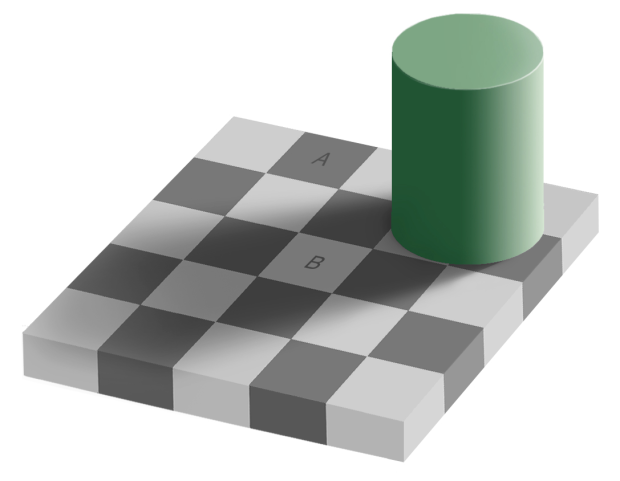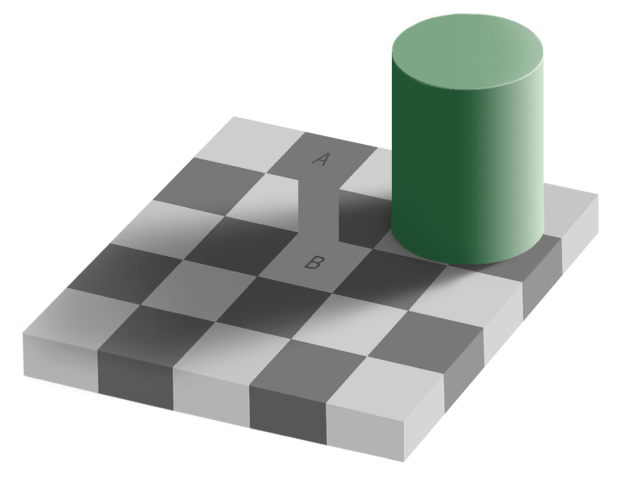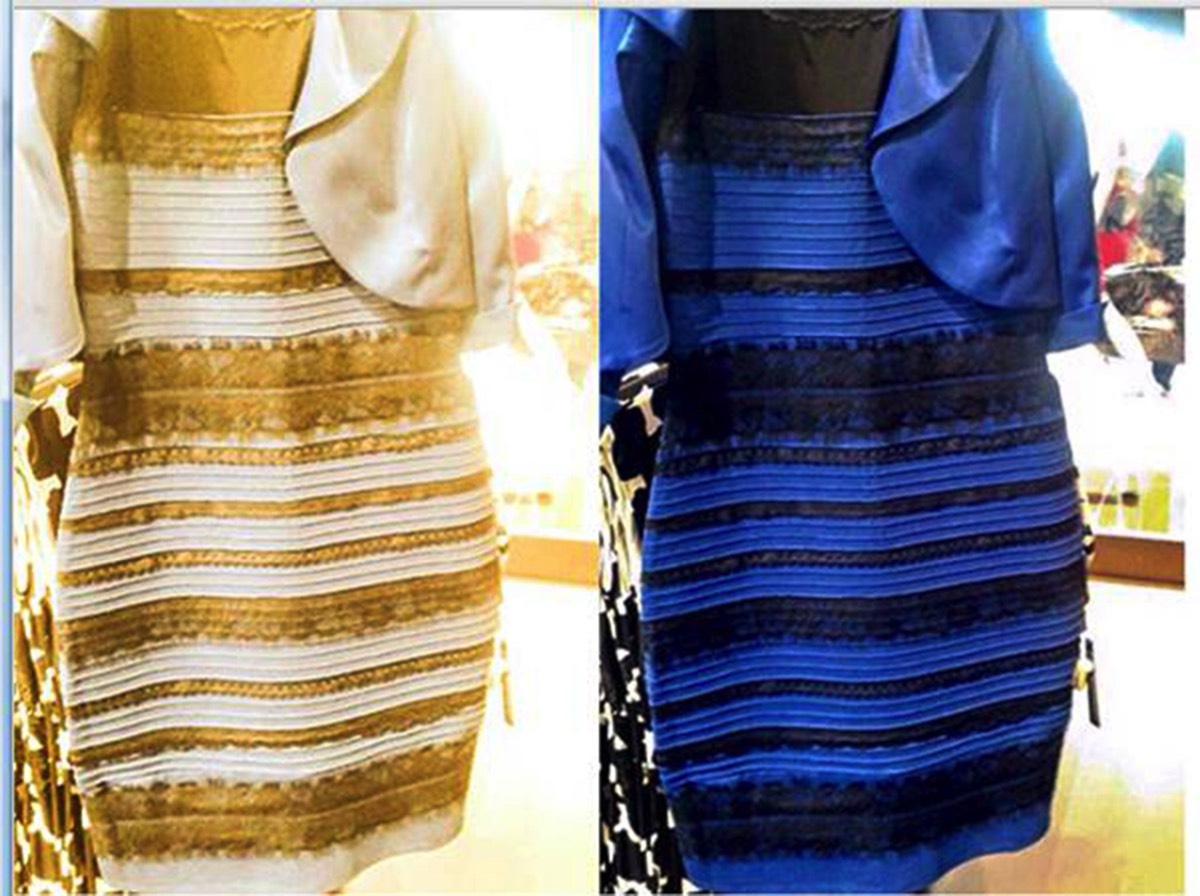There are some facts we ALL get wrong about colours. Like the belief that water is colourless (water molecules absorb lights of longer wavelengths (red, orange and yellow) and reflects lights of shorter wavelength (blue in this case), gold is gold (complex stuff called relativistic quantum chemistry here, as it shows how the colour of an object can be changed, Gold should be silvery colour but as its atoms already travel at 58% the speed of light so they absorb blue and reflect yellow), the sun is yellow (it is pure white if there is a colour called white!) and that there are seven colours in the rainbow which I will discuss later.
The term "false colour" (or pseudo colour) usually refers to a group of colour rendering methods used in digital photography to display images in colour which were recorded in the visible and non-visible parts of the electromagnetic spectrum but maybe all colours should be called false colours?.
A "false-colour" image is defined as an image that depicts an object in colours that are "perceived" to differ from those of a photograph (a "true-colour" image). But a photography is a record of light passing through a complex lens structure onto digital or traditional film and all these elements change the colour not to mention the reflected light and composition of the photographer, choice of ISO, aperture, shutter speed, time of day, viewing media used to display the image etc etc. So it is best to try to avoid the term ‘true colour’ because as we have seen nobody really knows precisely what the ‘truth’ is. Of course the term "false colour" is also a little ambiguous as no two people ever see exactly the same colour and we all only see a small part of the total spectrum, so one could argue about what "true colour" rand "false colour" really is. The supposedly simple act of seeing colour is much more complicated than we think. Science, our eyes, brain and even language also all determine how we see colours.
We actually only see colours we have names for, which is why I have chosen an image with only common colours. This means colours without names often get misidentified and worse, the colours we see are dependent on the language we speak. One notable colour is blue, which was called green for most of history. However, blue is not the only colour with a controversial history. To prove this the researcher, Jules Davidoff traveled to Namibia to meet the Himba people, who still do not have a name for the colour blue. He showed them a photo of 12 coloured squares (11 green and one blue) and asked them to select the odd colour. Most of the tribesmen could not determining the odd square as they could not see the colour blue, to them it was green like the other squares.
So let us go back to your choice of colours for A and B. The way your brain uses light conditions to interpret what you're seeing is evidenced in the checker shadow optical illusion created by MIT professor Edward H. Adelson. The squares marked A and B appear to be different colours -- A looks grey while B looks white. Right?
How many colours are there in a rainbow?
The current 7-colour rainbow was the invention of Sir Isaac Newton, who came up with the theory in 1666. People believed the rainbow had five colours at the time. However, Sir Newton believed everything in the universe existed in sevens. In reality there are thousands of colours in rainbow as there is no hard border between colours, again how many you see is based upon how many you can name in your language and, of course your individual eyesight…. and even then you will only see those within you visual spectrum and even then some colours are invisible due to the way our brains work.
Red-green and blue-yellow are often called forbidden colours. We cannot see them because of the way our eyes and brain work together. Our eyes determine the colour of objects using cells called opponent neutrons. Opponent neutrons become excited or inhibited depending on the colour they are seeing. However, the same cell that becomes stimulated on seeing red becomes inhibited on seeing green.This becomes a problem when that opponent neutron sees something that is red-green. It cannot become excited and inhibited at the same time, so it just ignores the colour. The same thing happens with yellow-blue. The opponent neutron that becomes excited on seeing yellow becomes inhibited on seeing blue. So, we cannot see something that is yellow-blue either.
Another very famous example of how we all see (or don't see) colours was "The Dress". The dress is a photograph that became a viral internet sensation on 26 February 2015, when viewers disagreed over whether the dress pictured was coloured black and royal blue, or white and gold. The phenomenon revealed differences in human colour perception, which have been the subject of ongoing scientific investigations into neuroscience and vision science,
Of course colours can be rendered quite differently on different screens. That means that looking at the picture on your phone or on your computer or on your extra monitor can completely change the way it looks. The resolution and the colour calibration can create huge visual differences but this does not explain the dress.
The light in the room at the time also affects the way your eyes perceive the image. Add in that there are several versions of the same picture floating around online, and it could easily be a question of which picture you're looking at and what device you're viewing it on but again this does not explain the dress.
For the dress there is the "interesting" fact that people looking at the same picture on the same screen in the same lighting conditions were still in disagreement, and suddenly the easy answers go out the window.
To unravel this part you need to look at a few things: the original photograph, the nature of light and our wacky brains.
Different light sources throw off light of different colours. Sunlight is very yellow. Shade casts a bluish hue. This changes the colour of light reflecting off an object and into your eye. But the reason we don't see the colour of a flower differently in sunlight versus shade versus under an incandescent or fluorescent lamp is that our brain takes account of the illumination changes and adjusts our colour perception accordingly.
But in the case of the mysterious dress, this doesn't seem to be working quite right.
Those pictures completely defeat the brain's natural mechanism for discounting illumination. If you look at the photo, the lower right is very yellow and the upper right is very blue. Both of those areas are providing information. The brain is trying to do this process in an image that doesn't work quite the same as it does in natural viewing.
Your brain gets confused as it does not know is it is the blue light reaching your eye due to it being a white dress under a blue light or a blue dress under a white light.
It is all about the art of photography and colour
Artist have always played with colour and light in order to create true works of art. Even scientists have to play with colour and light. When you look at the amazing pictures captured by the Hubble Space Telescope, or the Mars Exploration Rovers, do you ever wonder if this is what you’d really see with your own eyes? The answer, sadly, is no. In some cases, such as with the Mars rovers, scientists try and calibrate the rovers to see in “true colour,” but mostly, colours are chosen to yield the most science.
Disappointed IR photographers
Everyone who has tried infrared photography is disappointed at first that no camera takes those blue skied infrared photos directly. Rather, you get a less spectacular red picture that has to be worked on to produce lovely "false colours". Like all art it takes effort and practice using channel swiping techniques.





